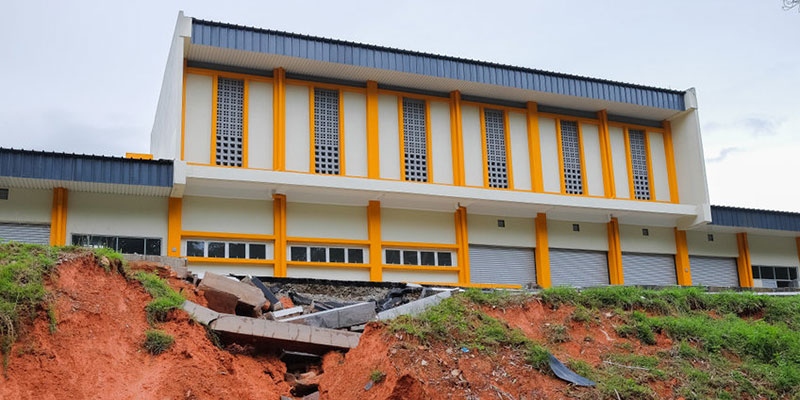Not only does ground subsidence increase the risk of flooding, but it also causes considerable damage to buildings and infrastructure.
Acting to slow depletion of aquifers through efficiency and recharge could reduce economic exposure
Land subsidence is a loss of elevation usually due to aquifer depletion. Despite major socioeconomic impacts, the rapidly increasing problem hasn’t been adequately studied. A recent study of subsidence in 200 locations across 34 countries, however, has revealed huge negative impacts and the global real estate sector is paying attention.
A research team led by Gerardo Herrera García studied subsidence caused by groundwater depletion and found it threatens 1.2 billion people and 21% of the world’s major cities. Asia is particularly vulnerable as it is home to 86% of the at-risk population, according to the study. A computer simulation found that by the year 2040 an estimated 635 million people — 19% of the world’s population — will live in areas at risk of flooding worsened by subsidence. Potential economic exposure could reach $8.17 trillion, or 12% of the global gross domestic product.
To conduct the study, the team developed the first global subsidence map, which was published by the UNESCO Land Subsidence International Initiative.
Real Estate Sector Takes Notice of Land Subsidence
Mapping shows potential land subsidence problem areas for the real estate sector across the United States, particularly in California, Texas, and Florida, which have suffered hundreds of millions of dollars in damages. Parts of California’s Central Valley have subsided nearly 30 feet. Denver and Albuquerque also are at serious risk.
Mexico, China, and India also face major subsidence issues. Indonesia’s capital city, Jakarta, has sunk more than 8 feet (2.5 meters) in just a decade, forcing the government to relocate the capital to Borneo.
Subsidence and Property Values
Land subsidence in the Netherlands causes considerable damage to houses and infrastructure, and damage is projected to reach 17 billion euros by 2050.
A Dutch study broke down how different kinds of subsidence affected property values, finding that uniform subsidence of a house and its surroundings lowered its value by 6%. Differential subsidence of a house in relation to the ground dropped value by 2%.
A study of homes in Maricopa County, Arizona, found that land subsidence hurt property values, with impacts pronounced for more expensive homes yet insignificant for substantially less expensive ones.
Mitigating and Preventing Land Subsidence
Much subsidence is caused by groundwater depletion. As subterranean aquifer structures empty, they begin to collapse, lowering ground elevation.
A number of techniques can help recharge aquifers, preventing collapse. Capture and purification of stormwater, desalination, and wastewater reuse can provide water to recharge aquifers as part of a managed aquifer recharge program. Aspiral™ modular wastewater treatment plants meet the toughest standards in the world for reuse, including California Title 22 and China Class 1A for aquifer recharge.
Another approach to preserving aquifers is to reduce demand. Efficiency measures that can slow groundwater pumping include:
- Leak monitoring and repair programs for water systems
- Public awareness programs
- Installing low-flow fixtures
- Water reuse, which allows wastewater to be used again for nonpotable applications.
While much has been made of water efficiency at the household or metropolitan scale, residential or water-conscious commercial real estate developers can incorporate water reuse at the neighborhood or development scale with quiet, low-odor Aspiral™ plants, which can purify and return a neighborhood’s wastewater for a second, nonpotable use.
Stormwater also can be captured and treated. And, where a source of salt water or brackish water is available, desalination can supply fresh water without depleting aquifers. Modular NIROBOX™ plants use reverse osmosis to make such applications viable on a small or large scale because the plants can be used in tandem to increase capacity.
Yet another approach is water-sensitive urban design, a growing trend that reimagines cities with natural water features that capture stormwater, purify it naturally, and return it to nature. These features include green roofs, bioswales, rain gardens, pervious pavement, artificial wetlands, and urban forests.
Although in general, little elevation can be restored after subsidence takes its toll, groundwater depletion can be slowed down. Contact the experts at Fluence to develop a strategy to prevent subsidence in your region.

